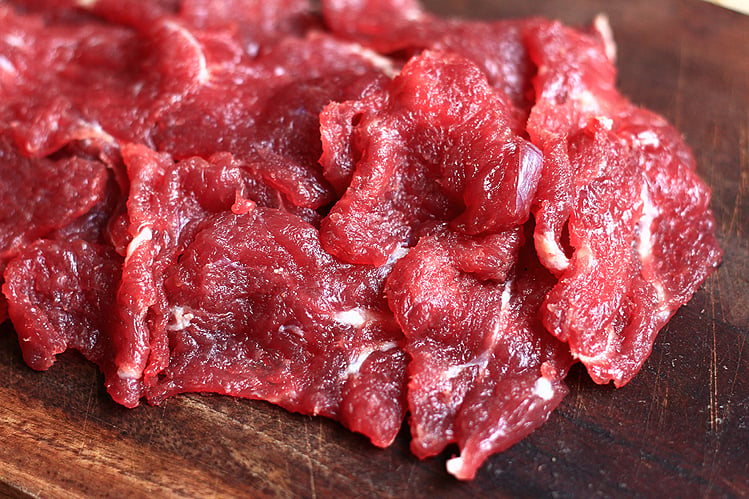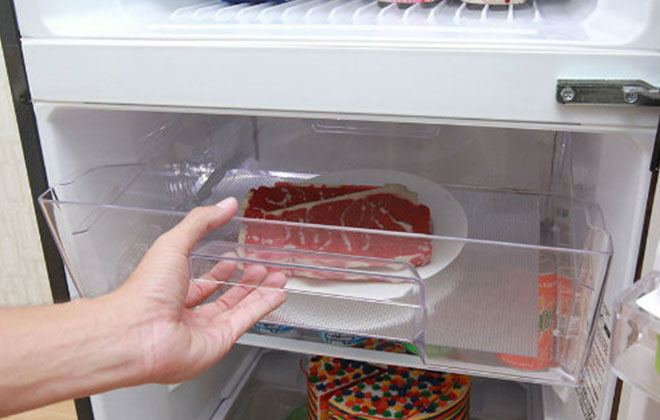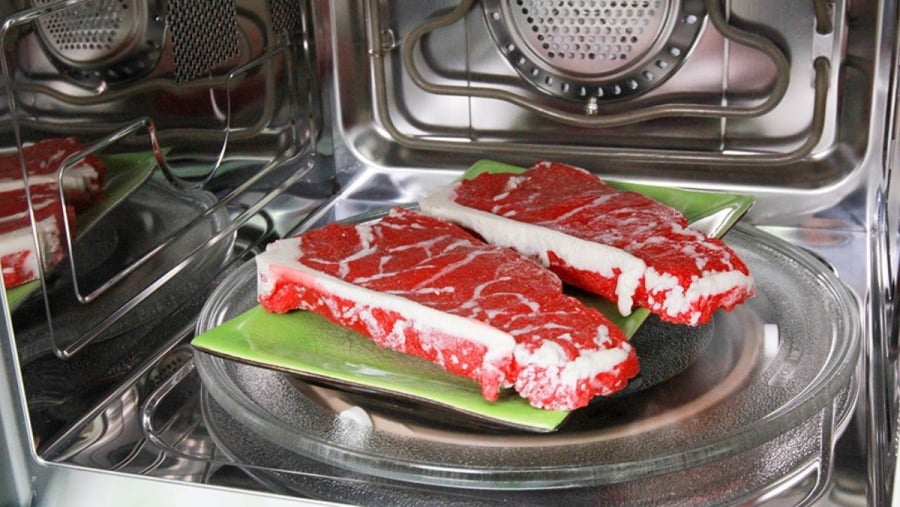Improper thawing of beef can lead to dryness, toughness, and even bacterial contamination, posing potential health risks. To ensure safe and high-quality beef thawing, home cooks should pay attention to the following:
– Avoid thawing beef at room temperature for extended periods, as this can create an ideal environment for bacterial growth.
– Refrain from refreezing thawed beef, as it may compromise the food’s quality and safety.
– Once thawed, it is best to cook the beef immediately. If necessary, it can be stored in the refrigerator’s cool compartment for up to 24 hours.
When using the cold water method to thaw beef, remember to place the meat in a sealed zip bag and ensure the bag remains closed throughout the process. This prevents water from seeping into the meat, protecting its nutrients and flavor.

Use a sealed zip bag when thawing beef with cold water to prevent water absorption.
The following are four effective methods to quickly and safely defrost beef while preserving its quality:
Thawing in the Refrigerator
The refrigerator thawing method is a popular choice for many home cooks due to its safety and ability to best maintain the quality of the beef.
Instructions: Simply transfer the frozen beef from the freezer to the cool compartment of your refrigerator. After about 24 hours, the meat will be completely thawed and ready for cooking without compromising its flavor and texture.

Thawing beef in the refrigerator is a popular choice for its safety and quality preservation.
Thawing with Cold Water
The cold water method is generally faster than using a refrigerator, but it may slightly affect the quality of the meat.
Instructions: Place the beef in a sealed zip bag and immerse it in a bowl of cold water. Change the water every 30 minutes to maintain a cool temperature. The thawing time will vary from 1 to 3 hours, depending on the size of the meat.
For an even quicker thaw, use warm water and add a small amount of salt and sugar to it. However, be careful not to make the water too hot, as it may affect the meat’s quality.
Thawing with a Microwave
Microwave thawing is a convenient and rapid method. Place the beef on a suitable dish and put it in the microwave. Use the defrost setting, which will take between 5 and 15 minutes, depending on the size of the meat.
Note: After thawing in the microwave, cook the beef immediately to prevent partial cooking and reduce the risk of bacterial contamination, ensuring a safe and tasty meal.

Microwave thawing is a quick and convenient option for busy home cooks.
Thawing on a Wooden Board or Metal Surface
One effective way to quickly thaw beef while maintaining its quality is to use a wooden board or metal surface, as metal is an excellent heat conductor. This method ensures rapid thawing without compromising the meat.
Instructions: Place the frozen beef on a clean wooden board or metal surface at room temperature. For best results, flip the meat occasionally during the thawing process. Typically, after 1 to 2 hours, the beef will be completely thawed and ready for cooking.






































